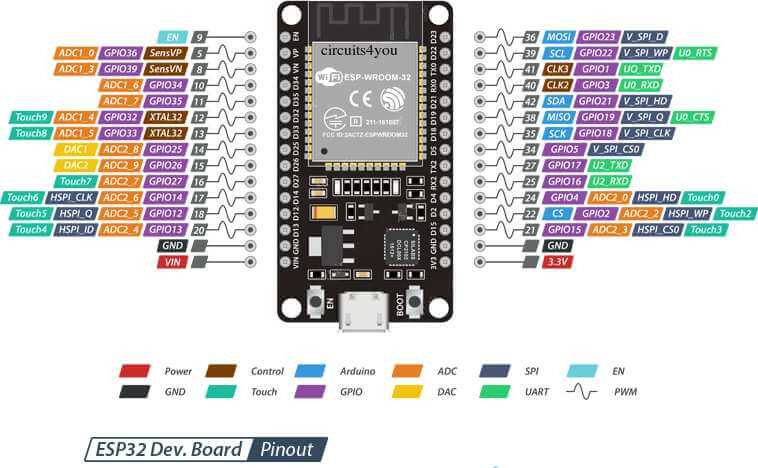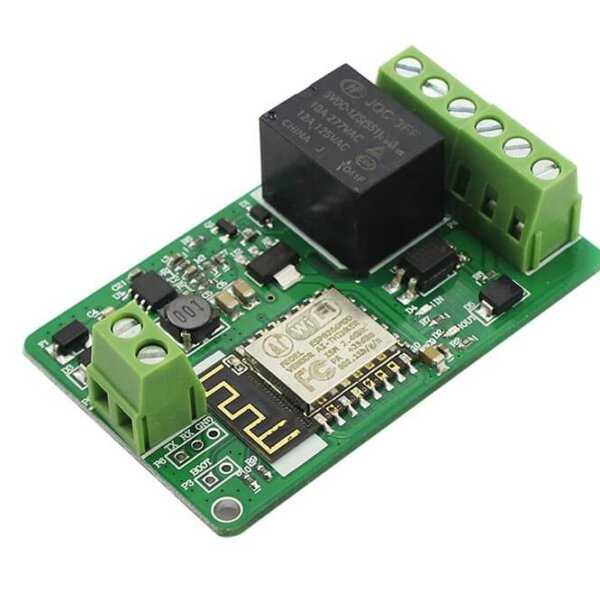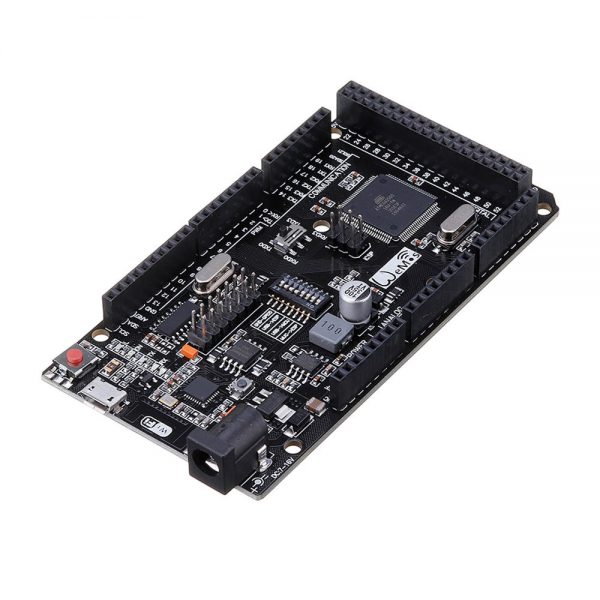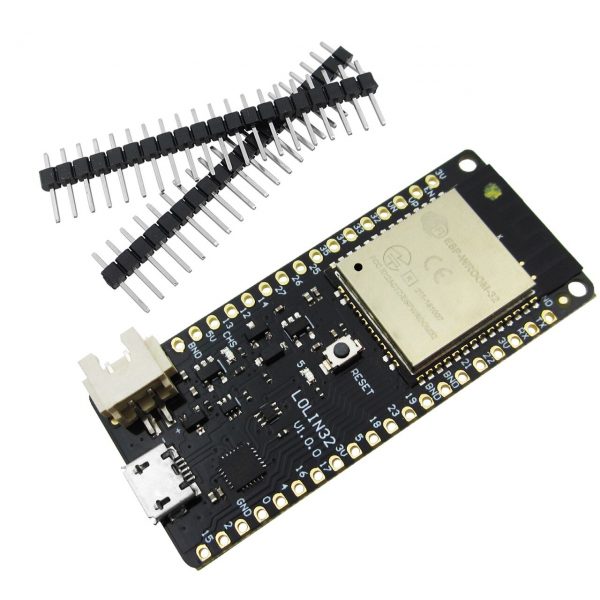Description
WROOM ESP32 Wifi Microcontroller
ESP32 is a prototyping board that is the work of the Shanghai-based company Espressif Systems. It incorporates the ESP32, a microprocessor tailored toward wearable electronics and IoT. It boasts integrated Wi-Fi and Bluetooth, along with an array of inbuilt antenna switches, and ultra-low power consumption. The company released the ESP8266 chip in 2014. Costing only a few dollars, this small chip is able to bridge an Arduino with a WiFi network, solving many issues that early IoT pioneers experienced.
It taken the attention of many brilliant engineers, who got it to co-operate with a choice of programming environments, including Arduino. Within a few months,the popularity started rising. This is ESP WROOM 32/ ESP32 WiFi-BT-BLE MCU Module. ESP WROOM 32 is a powerful, generic WiFi-BT-BLE MCU module that marks a wide variety of applications, ranging from low-power sensor networks to the most demanding tasks, such as voice encoding, music streaming, and MP3 decoding. At the main of this module is the ESP32 chip. There are 2 CPU centers that can be separately controlled or powered, and the clock frequency is adjustable from 80 MHz to 240 MHz.
The user may also power off the CPU and make use of the low-power coprocessor to observe the peripherals for changes or crossing of edges. ESP32 integrates a rich set of peripherals, ranging from touch sensors, Hall sensors, low-noise sense amplifiers, SD card interface, Ethernet, high-speed SDIO/SPI, UART, and I²C.
Using Bluetooth, users can connect to their phone or broadcast low energy examples for its finding.
Applications Of ESP32:
- Universal low power IoT sensor hub.
- Home mechanization.
- Universal low power IoT recorder.
- Mesh network.
- Video streaming of the camera.
- Industrial wireless control.
- OTT TV box / set-top box device.
- Baby screen.
- Smart Socket.
- Sensor networks.
- Wi-Fi toys: Counters, toys, Anti-lost device.
- Wearable electronic products.
- Wi-Fi speech recognition device.
- Wi-Fi location-aware devices.
Specifications and Features :
- Current – Receiving: 80 mA.
- Voltage – Supply: 2.2 V ~ 3.6 V.
- Current – Transmitting: 80 mA.
- Number of pins supported: 30
- Data Rate: 54 Mbps.
- Frequency: 2.4 GHz.
- Mounting Type: Surface Mount.
- Operating Temperature: -40°C ~ 85°C.
- Power – Output: 16.5dBm.
- Protocol: 802.11b/g/n/d/e/i.
- RF Family/Standard: WiFi.
- Sensitivity: -98dBm.
- Serial Interfaces: I²C, I²S, SPI, UART.
- Integrated 520 KB SRAM.
- Hybrid Wi-FI & Bluetooth.
- High level of integration.
- Ultra-low-power management.
- 4 MB Flash.
- On-board PCB antenna.
esp32 wroom pinout

Attachments and Links :
- ESP WROOM 32 Datasheet.
ESP32 Development Board
The ESP8266 does have a few problems though: it has a small number of GPIO pins, only a few A/D converters, and it’s under-powered.
These issues addressed by the chip’s successor.the esp32 wroom, which launched in 2016. It brought with it an improved spec sheet and the ability to easily connect with external microcontrollers.
The central processor is a 32-bit Tensilica LX6 dual-core, clocked at 240Mhz. You’ll get just over 500kb of memory to play with, along with support for external flash drives.
Wireless connection comes in the form of BLE Bluetooth . 802.11 b/g/n WiFi.
.
Unlike the Arduino UNO for example, the ESP32 DevKit pinout has been designed to slot directly into a breadboard and has 32 I/O pins.
This means you can plug it into the center of your breadboard. you’re ready to build a circuit nearby it. You’ll be able to plug it into your computer via a micro-USB socket at the far end, and there are two buttons on the top: one for resetting the device, the other for programming.
Designing a circuit with ESP32 Dev Kit
If you want to design a circuit using ESP32 dev kit, you can either type esp32 into the search box, or click on the “controllers” tab and locate it. simply drag and drop it into the canvas. you can click on the ESP32 DevkitC icon and then click ‘swap’. This will replace the Arduino with the ESP32 dev kit. You can then add apparatuses in the way that you would with the Arduino; wiring, additional modules and breadboards will be added automatically.
For example, if you’d like to wire up a 64-pixel dot-matrix display, you can simply drag it into position. As you can see, all the wiring and logic change is automatically taken care of for you.
* The ESP32 dev kit is currently in the Alpha version on circuito.io, meaning it’s not been fully tested by our team yet, and there is also no test code for it at the moment.
Package Includes :
1 x WROOM ESP32 Wifi Microcontroller













Reviews
There are no reviews yet.